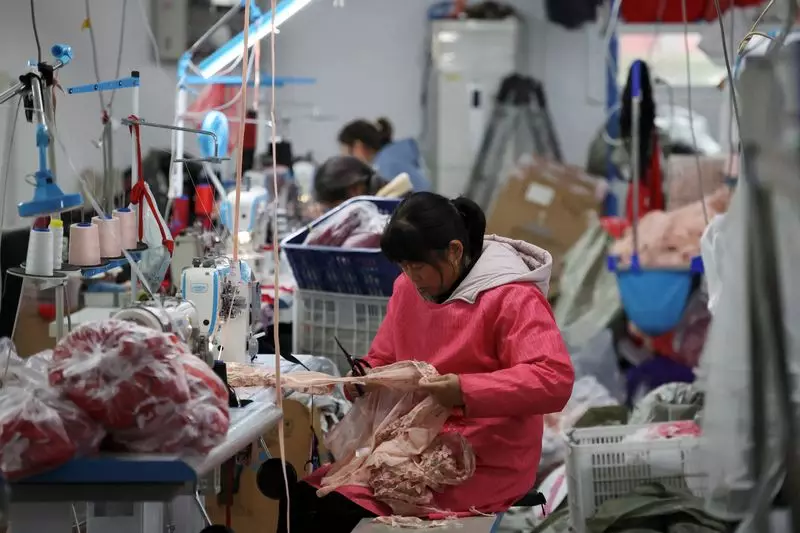In 2024, China’s industrial landscape faced significant challenges as profits for industrial firms fell for the third consecutive year, as reported by the National Bureau of Statistics (NBS). This decline, now settled at an alarming 3.3% for the year, reflects broader economic issues that extend beyond mere numbers. The contraction occurred after a 4.7% decrease during the first eleven months of the year, a trend that starkly contrasts with the industry’s brief resurgence illustrated by a 11% rise in profits during December compared to the previous year. However, this uptick seems to merely gloss over the persistent underlying problems threatening the stability of the nation’s economic framework.
The pressures from external entities, specifically tariffs proposed by the incoming Trump administration, have added a layer of uncertainty for Chinese industries. As the trade relationship between the United States and China is poised to shift, factories have hastened their export activities, attempting to mitigate the risks associated with potential punitive duties. This preemptive measure can be viewed as a sign of anxiety within the industrial sectors; businesses are scrambling to offload inventory before facing the consequences of increased tariffs, which could devastate the already fragile profitability landscape.
A significant contributing factor to the industrial sector’s struggle is the sluggish domestic demand. This downturn is coupled with a lack of robust consumer confidence, exacerbated by a shaky property market that has destabilized the financial framework for many households. The government’s recent measures, including a consumer goods trade-in initiative, indicate a desperate attempt to re-engage consumers. However, the delayed impact of such stimulus efforts raises questions about their effectiveness in fostering a sustainable recovery. The overarching sentiment among businesses and consumers alike continues to be one of caution, causing ripples across various markets and sectors.
Disparities Among Different Firms
The financial breakdown from the NBS reveals further nuances within the industrial sector. While profits at state-owned enterprises plummeted by 4.6% and foreign firms saw a 1.7% decline, private-sector companies demonstrated slight resilience with a nominal profit increase of 0.5%. This variance points to a shifting dynamic within the economic sphere, where smaller and more agile businesses may be better equipped to adapt to external and internal pressures. Nonetheless, these figures depict an overall distressing scenario where the positive indicators are not strong enough to outweigh the negative trends enveloping the industry as a whole.
Looking Ahead: The Road to Recovery
As we look forward, it is crucial for policymakers to implement effective strategies that cater not only to stimulating immediate growth but also sustaining long-term economic health. With multiple rounds of stimulus already in place, the authorities must continue to innovate and modify their approach to match the evolving economic landscape. The need for coherent policies that enhance both domestic consumption and international competitiveness is more urgent than ever, as the Chinese industrial sector navigates through these turbulent waters. The year ahead will be a critical juncture in determining whether China can regain its economic momentum or if it will endure further setbacks.

